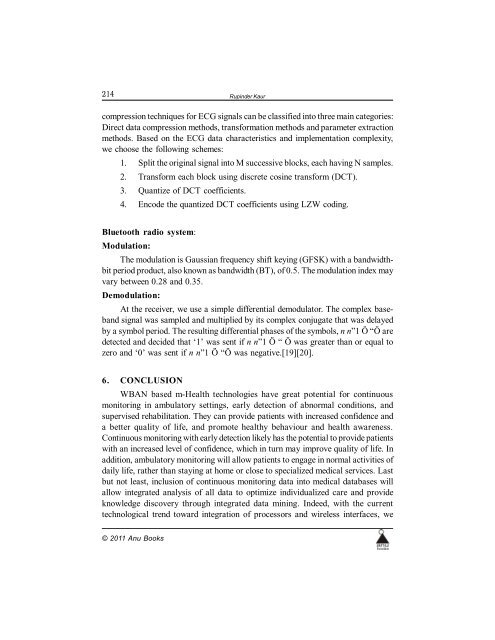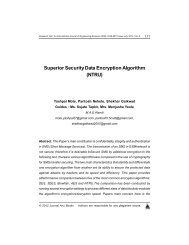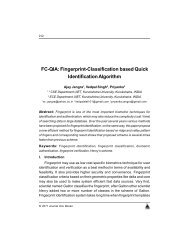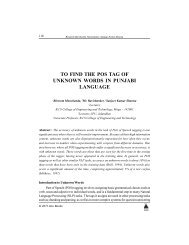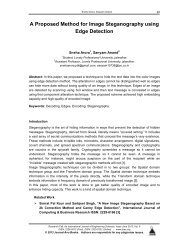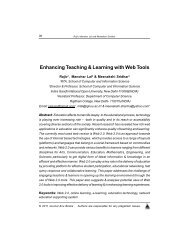Wireless Body Area Network & Its Application - Ijoes.org
Wireless Body Area Network & Its Application - Ijoes.org
Wireless Body Area Network & Its Application - Ijoes.org
You also want an ePaper? Increase the reach of your titles
YUMPU automatically turns print PDFs into web optimized ePapers that Google loves.
214<br />
Rupinder Kaur<br />
compression techniques for ECG signals can be classified into three main categories:<br />
Direct data compression methods, transformation methods and parameter extraction<br />
methods. Based on the ECG data characteristics and implementation complexity,<br />
we choose the following schemes:<br />
1. Split the original signal into M successive blocks, each having N samples.<br />
2. Transform each block using discrete cosine transform (DCT).<br />
3. Quantize of DCT coefficients.<br />
4. Encode the quantized DCT coefficients using LZW coding.<br />
Bluetooth radio system:<br />
Modulation:<br />
The modulation is Gaussian frequency shift keying (GFSK) with a bandwidthbit<br />
period product, also known as bandwidth (BT), of 0.5. The modulation index may<br />
vary between 0.28 and 0.35.<br />
Demodulation:<br />
At the receiver, we use a simple differential demodulator. The complex baseband<br />
signal was sampled and multiplied by its complex conjugate that was delayed<br />
by a symbol period. The resulting differential phases of the symbols, n n”1 Ö “Ö are<br />
detected and decided that ‘1’ was sent if n n”1 Ö “ Ö was greater than or equal to<br />
zero and ‘0’ was sent if n n”1 Ö “Ö was negative.[19][20].<br />
6. CONCLUSION<br />
WBAN based m-Health technologies have great potential for continuous<br />
monitoring in ambulatory settings, early detection of abnormal conditions, and<br />
supervised rehabilitation. They can provide patients with increased confidence and<br />
a better quality of life, and promote healthy behaviour and health awareness.<br />
Continuous monitoring with early detection likely has the potential to provide patients<br />
with an increased level of confidence, which in turn may improve quality of life. In<br />
addition, ambulatory monitoring will allow patients to engage in normal activities of<br />
daily life, rather than staying at home or close to specialized medical services. Last<br />
but not least, inclusion of continuous monitoring data into medical databases will<br />
allow integrated analysis of all data to optimize individualized care and provide<br />
knowledge discovery through integrated data mining. Indeed, with the current<br />
technological trend toward integration of processors and wireless interfaces, we<br />
© 2011 Anu Books


